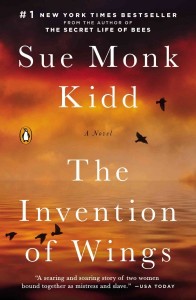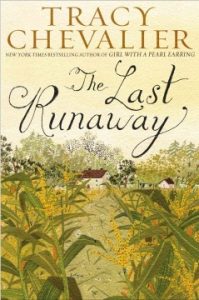
I fully admit that my reading list isn’t as diverse as it could be, partly because the bookternet (bookish + Internet) makes it so easy to reach for books already in my wheelhouse. Favorite authors mention other authors they enjoy, Goodreads points me to books I might like based on what I’ve already read and my wonderful bookish friends and fellow colleagues at the library are constantly dropping book references. This is one of my favorite parts of the bookternet (and the bookish community in general) because I know that I will never run out of great reading material in my to-be-read pile. But it also means that, if I’m reading books like what I’ve already read, I’m not reading books that aren’t like anything I’ve ever read before.
We’ve talked a fair amount about diversity in literature here on the Free For All, but mentioning it occasionally isn’t quite enough. It’s important to continue to talk about diversity, particularly in literature, on a regular basis lest it become relegated to shadows, ensuring that nothing ever changes. In an effort to talk more about diverse literature, I’m starting a regular feature for Saturdays @ the South where I talk about books from a particular area of the world in an effort not only to introduce you to diverse voices, but to also introduce myself to new voices and ideas that I haven’t been exposed to previously. It won’t be every week; there will still be the weird bookish ramblings and musings you’ve come to expect on a Saturday, but I’d like to feature a new country or region every month to ensure that the conversation continues.
Today, we’re talking about our neighbors to the south, Mexico. Mexican literature has a rich heritage and many of it’s classic works, as well as new contemporary authors, are beginning to become more widely available in translation. My high school and college Spanish is very sadly rusty, so I’m grateful for the efforts of organizations like Deep Vellum and UNESCO and resources like Three Percent who promote translations of works into English. While there are always issues with reading any work that has been translated from the author’s original language, the best will try to keep the lyricism and ideas of the author in tact to ensure a reading experience that is still rich. Here are some books by Mexican and Mexican-American authors that can expand our reading experiences together:
 Pedro Paramo by Juan Rulfo
Pedro Paramo by Juan Rulfo
Will Evans wrote on LitHub he “believe[s] the greatest Mexican novel ever written is Pedro Paramo…” because it “changed the way that literature is written, read, processed and remembered when it was published in 1955.” Wow. That’s a bold statement to make for any novel, but it’s enough to make me want to read this one sooner rather than later.
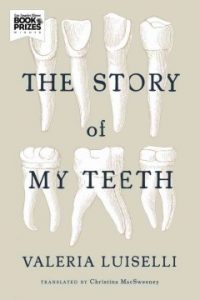 The Story of My Teeth by Valeria Luiselli
The Story of My Teeth by Valeria Luiselli
The Culture Trip mentioned that Valeria Luiselli, a Mexico City native, is “described as one of the brightest literary talents in the entire world right now.” Again, wow. How have I missed this on my reading radar? This book is her latest novel (published in 2015) follows the adventures of Highway, a world-traveler, auctioneer and general bon-vivant, whose most precious possessions are the teeth of the “notorious infamous” like Virginal Woolf, Plato and more.
 Signs Preceding the End of the World by Yuri Herrera
Signs Preceding the End of the World by Yuri Herrera
This is a book about borderlands that takes a great deal from Pedro Paramo by Juan Rulfo. The narrator is trying to bring her brother back to Mexico from across the US border, but the book tackles much more than immigration as it is steeped in mythology as well. A quick note here: Yuri Herrera has at least three books mentioned on the Best-of-Mexican-Literature lists I found, so I’m guessing that any of his books would be a good place to start.
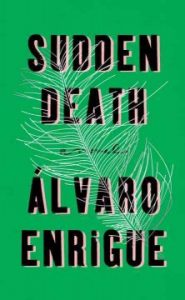 Sudden Death by Alvaro Enrigue
Sudden Death by Alvaro Enrigue
LitHub voted this one of the best books of 2016, period. No ethnic qualifier or best of Chicano/a literature. They just thought this book was awesome, and boy, does it sound cool. This book is quasi-historical, mostly meta-fictional about “a 16th-century tennis match between Spanish poet Francisco de Quevedo and Italian painter Caravaggio, playing with a ball stuffed with the hair of Anne Boleyn.” Seriously, how quickly can I get this book?
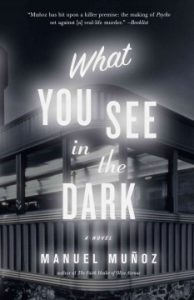 What You See in the Dark by Manuel Munoz
What You See in the Dark by Manuel Munoz
This book is set in the 1950s in an Alfred Hitchcock-style narrative. This tale of a doomed love affair set against the backdrop of a filmmaker who comes to Bakersfield, CA to scout locations for a film about murder at a motel peeks into character’s private thoughts, jealousies and dreams. Mexican-American author Munoz has received high praise for both this book (his first novel) and his previous short story collections.
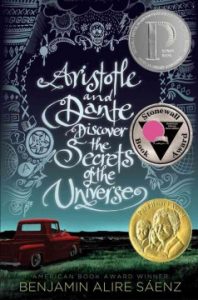 Aristotle and Dante Discover the Secrets of the Universe by Benjamin Alire Saenz
Aristotle and Dante Discover the Secrets of the Universe by Benjamin Alire Saenz
Alire Aaenz is another Mexican-American author who has managed to pull together a novel that is both about two teenagers falling in love, but also a sweeping character study of teenagers, their parents, Mexican-American identity in the modern age and LGBTQ perspectives that shatters stereotypes. His characters are undeniably real, his writing is gorgeous and the range of emotions through which he guides both the characters and the readers is nothing short of an astounding accomplishment. The audiobook,is narrated by pre-Hamilton, post- In the Heights, Lin Manuel Miranda and is perfectly executed. This book is a favorite of mine and was recommended to me by more than one librarian here in the library. It’s a great example of a book that I probably wouldn’t have been exposed to because it’s not like what I usually read, but was an incredibly rich and rewarding reading experience that I’m so glad to have had.
Hopefully one of these books will pique your interest in reading a little more internationally. As Japanese author Haruki Murakami once wrote: “If you only read the books that everyone else is reading, you can only think what everyone else is thinking.” It’s good to get into someone else’s head for a while. If you’re intrigued and would like more suggestions, feel free to mention that in the comments or stop by the library and ask! Till next week, dear readers, do your best to read a little out of your usual sphere of influence. You never know what next great read you’ll discover just beyond our backyards.



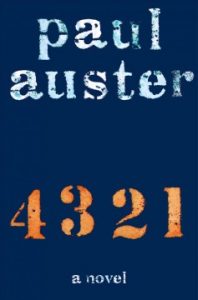 4 3 2 1
4 3 2 1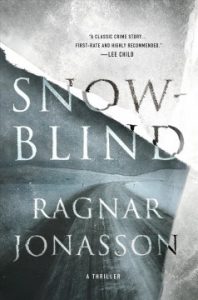
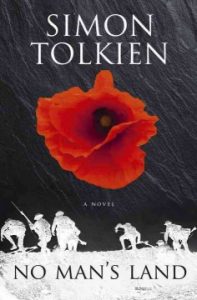 No Man’s Land
No Man’s Land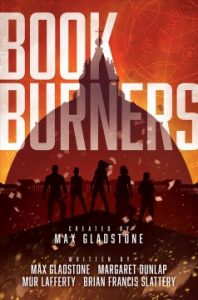
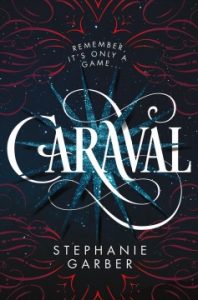 Caraval
Caraval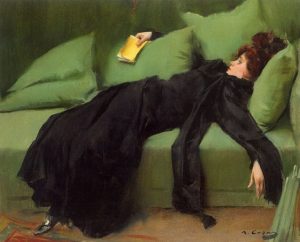

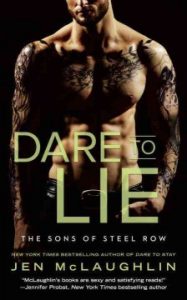 In the interest of full disclosure, I really can’t get into romances set amongst criminals–whether they are in a motorcycle gang, a mob, or in prison, I find the trope really troubling and often full of some really problematic misogyny. So imagine my genuine surprise when I discovered Jen McLaughlin’s Sons of Steel Row series, featuring a gang in the gritty streets of Boston (which feel more like mid-90’s Dennis Lehane than today, but that is perfectly ok with me).
In the interest of full disclosure, I really can’t get into romances set amongst criminals–whether they are in a motorcycle gang, a mob, or in prison, I find the trope really troubling and often full of some really problematic misogyny. So imagine my genuine surprise when I discovered Jen McLaughlin’s Sons of Steel Row series, featuring a gang in the gritty streets of Boston (which feel more like mid-90’s Dennis Lehane than today, but that is perfectly ok with me).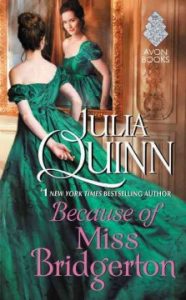 Poking through the shelves at my local library and looking for a fun read for a frigid Saturday afternoon, I came across Julia Quinn’s
Poking through the shelves at my local library and looking for a fun read for a frigid Saturday afternoon, I came across Julia Quinn’s 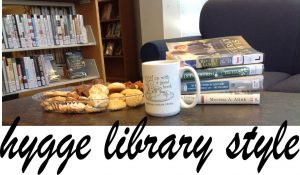
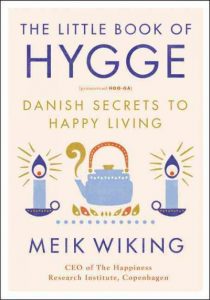 In case you’re curious, the book I was recently so distracted by is
In case you’re curious, the book I was recently so distracted by is  In that spirit, I have decided to spend the rest of this post encouraging you to discover how hyggeligt it can be to discover your DIY side. Those who know me might find it amusing that I am extolling you to get crafty, since that is not known to be one of my strengths. But there is something undeniably cozy about certain crafty past times. As a native Dane, Wiking agrees with me: “knitting is extremely hygge. It is a sign of ‘everything is safe’- it has a certain grandma vibe to it- and even the sound of knitting is hygge. Knitting also brings calmness to the situation and atmosphere.” If you, like many of us, could use a little extra calm, perhaps knitting will be your preferred way to experience hygge this winter. Thanks to the passion of one of our former staff members, the West Branch has a rather good collection of books on both knitting and crocheting. If you’re new to knitting, it has always seemed to me that a good place to start would be with
In that spirit, I have decided to spend the rest of this post encouraging you to discover how hyggeligt it can be to discover your DIY side. Those who know me might find it amusing that I am extolling you to get crafty, since that is not known to be one of my strengths. But there is something undeniably cozy about certain crafty past times. As a native Dane, Wiking agrees with me: “knitting is extremely hygge. It is a sign of ‘everything is safe’- it has a certain grandma vibe to it- and even the sound of knitting is hygge. Knitting also brings calmness to the situation and atmosphere.” If you, like many of us, could use a little extra calm, perhaps knitting will be your preferred way to experience hygge this winter. Thanks to the passion of one of our former staff members, the West Branch has a rather good collection of books on both knitting and crocheting. If you’re new to knitting, it has always seemed to me that a good place to start would be with 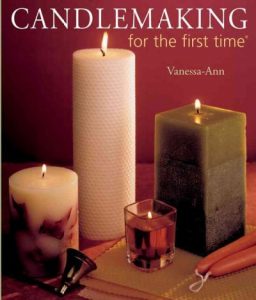 If knitting doesn’t warm your heart, you might try candlemaking. In fact, surveys show that candles are one of the items that Danes most associate with hygge. And according to Wiking, Danes consume more candles per capita than any other country on earth. So candlemaking must get very high hygge points.
If knitting doesn’t warm your heart, you might try candlemaking. In fact, surveys show that candles are one of the items that Danes most associate with hygge. And according to Wiking, Danes consume more candles per capita than any other country on earth. So candlemaking must get very high hygge points. 
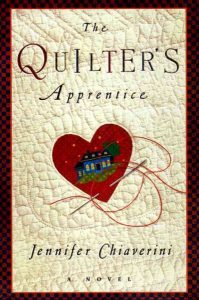 Elm Creek quilts series
Elm Creek quilts series